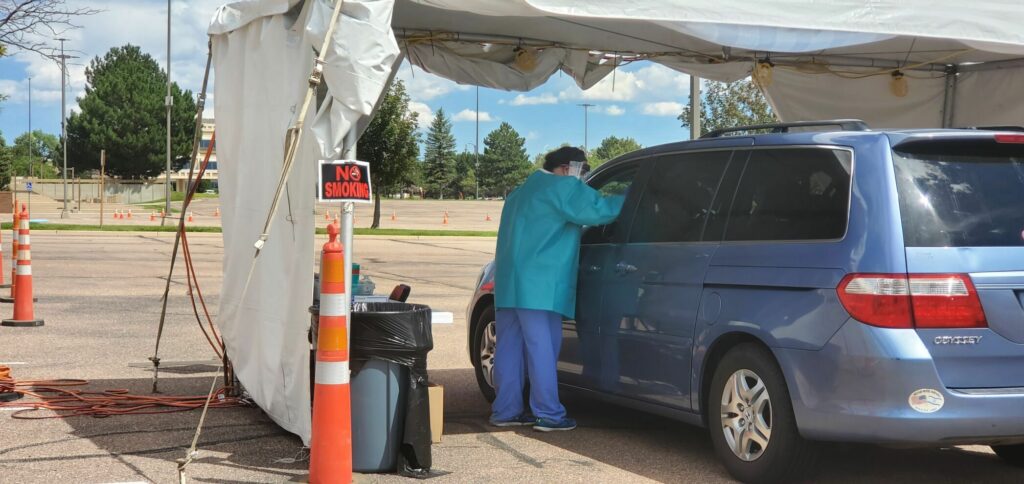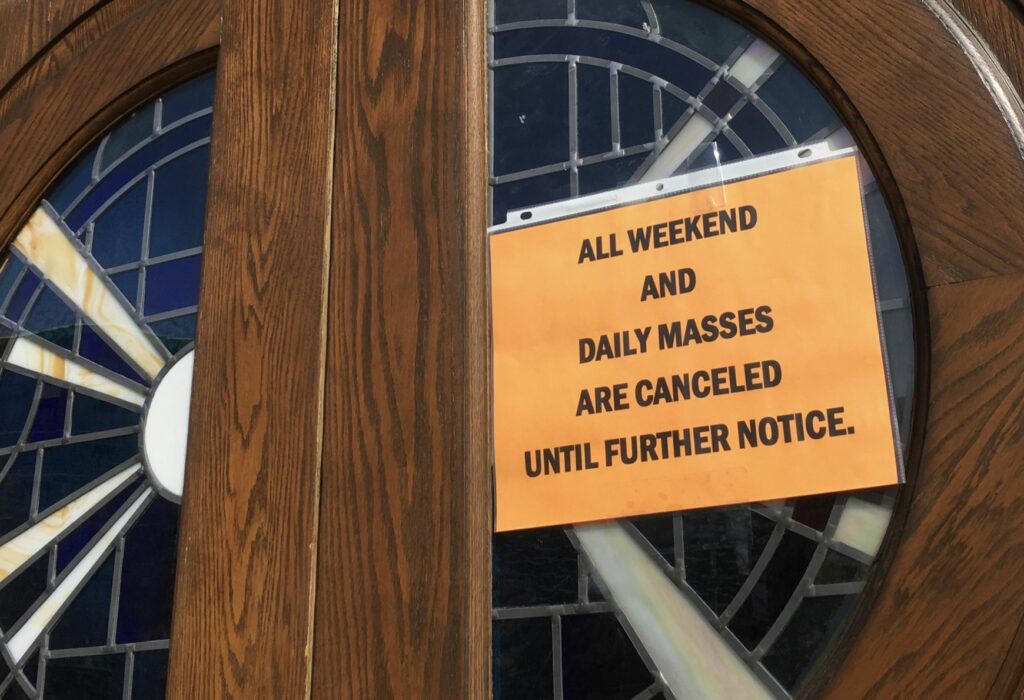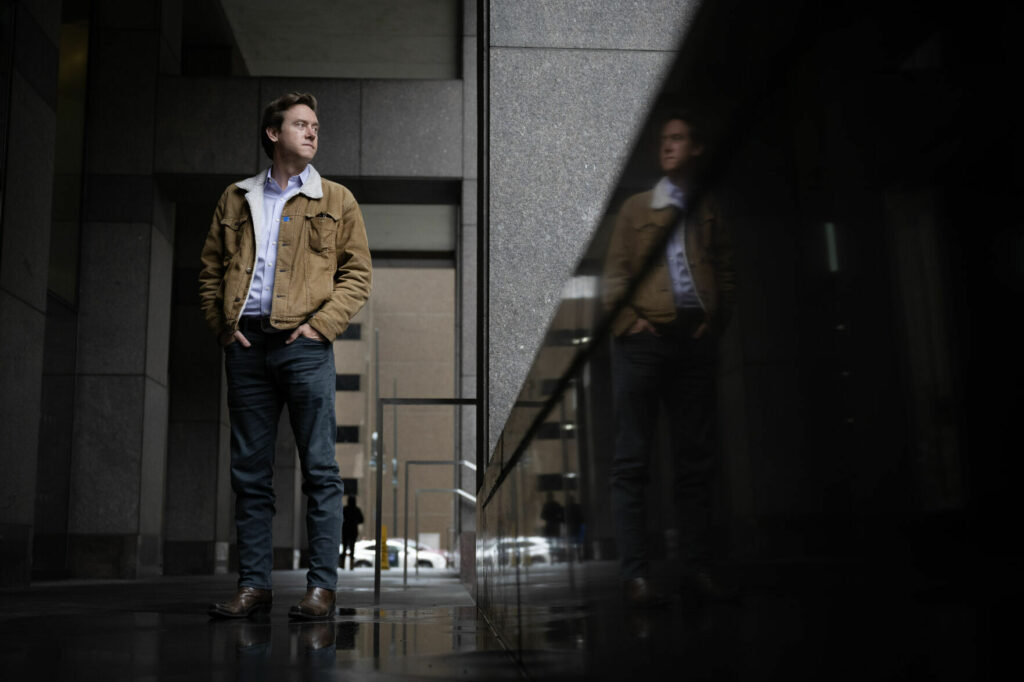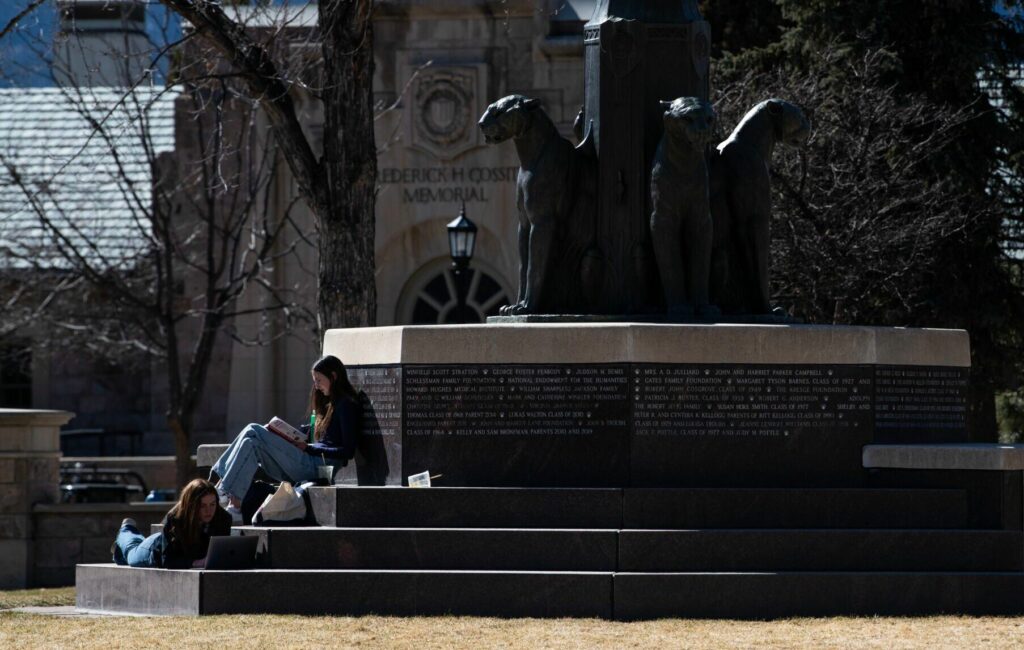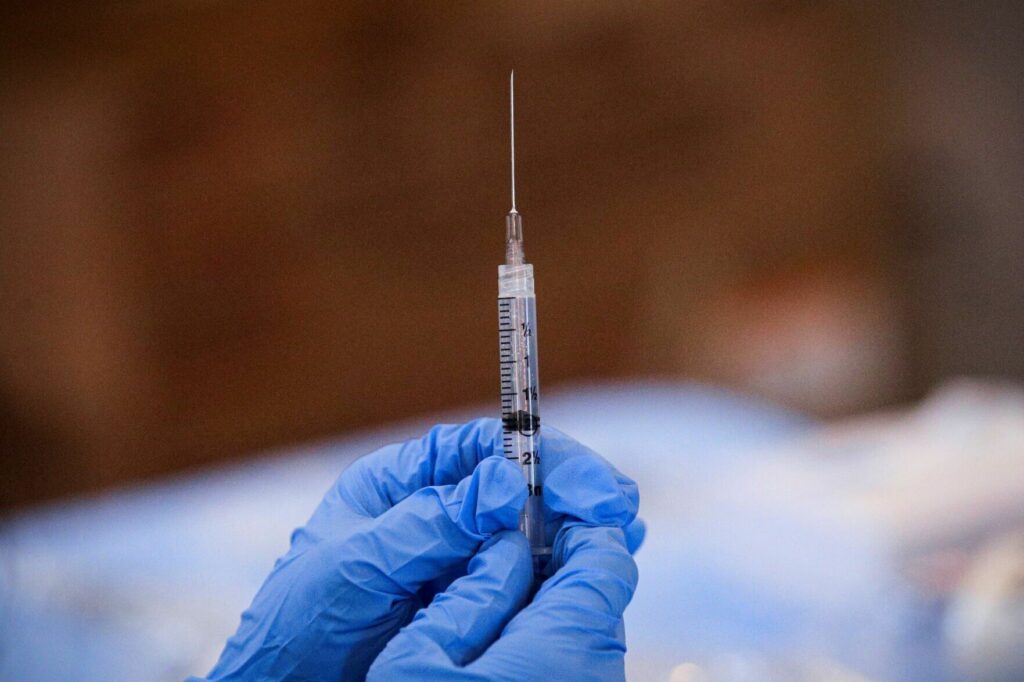Coronavirus cases approach spring surge levels

The number of new coronavirus cases in Colorado — at least, the number of cases tracked by the state health department — shot past previous high marks during a steady increase over the past few weeks, reaching more than twice the number in March and April.
But because there’s more testing now than during the state’s first wave in March and April, the two surges aren’t the same in a one-to-one comparison. A greater portion of the actual cases are being tracked now.
Estimates of what portion of actual cases have been tracked, and what the actual number of infections has been over time, show the number of new infections is nearing the same levels from the middle of March, when quickly escalating social distancing orders were enacted.
Hospitalizations are up to about half what it was then, but they will continue to rise, as hospitalizations lag new infections. The mortality rate has come down since the early part of the pandemic, thanks to advances in therapies for hospitalized patients and a better stockpile of supplies and protective gear, but the mortality rate is still multiple times higher for COVID-19 than the seasonal flu, and deaths in Colorado have begun to tick up as well, and will be expected to rise more in coming weeks.
On Tuesday, Denver slid into a higher level of restriction due to the increases, a move that will recommend schools move online, gyms close and capacity within public spaces such as churches, retail stores and restaurants be limited to 25 percent capacity. City officials said that the spread of the virus here can’t be attributed to one single cause and that unlike earlier in the pandemic, newly infected patients span the age spectrum.
The team of researchers and experts modeling the spread of COVID-19 and advising Gov. Jared Polis since the spring estimate that one out of every ten actual cases, whether the person had symptoms or not, was counted in the state’s data early in the pandemic. In the summer, the official case counts captured about one in every three cases, they estimate. And now they estimate about 40% of actual cases are counted in the data.
Based on those estimates, the number of actual coronavirus infections in the state likely is near the same level as mid-March, in the days leading up to various measures implemented by state and local governments intended to increase social distancing and slow the spread of COVID-19, including the shutting down of non-essential businesses.
The number of people hospitalized with confirmed or suspected cases has almost reached 600, about half of the peak of hospitalizations in the state in early April.
Given the number of new cases in recent days, the estimated known and unknown portion of actual cases and the known time between infection and hospitalization, the number of new hospitalizations could reach about three-quarters of the April peak, within a few weeks. If the rise continues, the number of coronavirus hospitalizations could reach new highs.
When the number of hospitalizations peaked in April, the cases took about half of the state’s ICU capacity, and 40% of the state’s ventilators were in use. In the summer and fall, coronavirus cases took between 4% and 10% of the state’s ICU capacity, and the percent of the state’s ventilators in use declined to between 25% and 30%, but both numbers have begun to rise again.
The number of coronavirus deaths has also begun to rise, and has surpassed the coronavirus deaths from the state’s summer surge, but is still nowhere near the spring levels. Deaths lag several weeks behind cases and hospitalizations, and therefore are expected to rise in the coming weeks and months, corresponding to this new surge.
The percent of cases that end in death has come down. Using the newer estimates of the actual cases, around 1% of coronavirus cases were deadly, whereas now the figure is closer to one-half of a percent. The same portion for the seasonal flu is considered to be below 0.1%.
Hospitals have reported the same decline, where among those who need to be hospitalized because of the disease, the portion has dropped from about 15% to closer to 9%, according to a report from the Massachusetts Medical Society published October 15.
“The critical point there is that we’ve been roughly on that same curve for about three weeks,” said Dr. Jonathan Samet, the dean of the University of Colorado School of Public Health and the lead researcher on the COVID-19 modeling team.
“Anything we do takes several weeks to have an effect,” he said, “If this curve keeps rising and rising, quite clearly we’re in the timeframe of taking new actions.”
One spokesperson from the Denver Department of Public Health and Environment said if the transmissions of the virus aren’t slowed soon, the level of hospitalizations will pass the April peak by late November.
“We have a strong healthcare infrastructure, which includes experienced hospital emergency managers, who are working collaboratively to respond to this third wave of COVID-19,” spokeswoman Tammy Vigil said in an email. “But the reality of our healthcare system becoming overwhelmed is quite real. In order to change this upward trajectory, we will need to see a substantial increase in the level of transmission control over the next few weeks.”
At a press conference Tuesday announcing the tighter restrictions in Denver, the executive director of the city’s public health department said that residents needed to “turn this around quickly” before hospitals face capacity problems.
“We are on this track right here where hospital systems could become overwhelmed in the next couple of weeks,” Bob McDonald said.
Hospital officials said earlier this month that they feel better prepared now for a surge than in the spring, when supplies were more scarce, the virus was new, and treatments for it were unknown or unproven. As protective gear has become more readily available, hospitals have been stockpiling that equipment since the spring, the officials said, and have been judicious in how they use the equipment on a daily basis.
John Douglas, the executive director of the Tri-County Health Department, said that while treatment for COVID patients at home hasn’t improved much, therapies for hospitalized patients have advanced significantly. He said that in addition to the mortality rate falling, fewer people need to be on ventilators and the average hospital stay for COVID patients has shortened.
The situation as it stands now isn’t as bad as it was in the spring, Douglas said. But between the rising percentage of tests that are positive and the increase in hospitalizations, the state was on course to return to those levels. The percentage of tests that are positive has jumped to more than 7%, which indicates an increase in spread within the community, he said. That means that the rise in new cases cannot be attributed solely to improved testing; the virus isn’t just being tracked better, it’s also spreading more.
Epidemiology modelers from the University of Colorado “are telling me that, look, if your transmission prevention behavior either stays the same or gets worse as we move indoors, we’re going to see a situation where we can’t handle all the people coming to our ICUs by late December or maybe before late December,” Douglas said.
The situation could be exacerbated by the holidays, when more people are expected to come together and when travel across the country to gather indoors may increase. Echoing what officials have said at press conferences and in meetings for weeks, Douglas said “COVID fatigue” was playing a “really big” role in the current spike.
“This is a slog; we’re all tired,” he said. “But we do have some light at the end of the tunnel. A lot of the things that would prevent (a worsening situation) from happening is individual choices.”
That sentiment was echoed by Stephen Cobb, the chief medical officer for Centura Health’s Denver Metro Group. He said Centura’s facilities are adding about 10 COVID patients every 24 hours, well below spring levels but above rates from recent months. Providers know much more about the virus now than they did previously, he said, but the key to fending off surges in hospitals is the community doing its part to blunt transmission.
“Even as we’ve learned more about how this virus is spread, we’re all tired of hearing it, and we’re all tired of doing it,” he said. “This isn’t the time to be tired.”
Heather Young, an infectious disease physician at Denver Health, said earlier this month that the hospital had meetings at least once a week to discuss the availability of beds and whether to continue with elective procedures. At one point in early October, the hospital briefly paused offering those procedures, and Young said Monday that they’re canceling individual surgeries as needed.
The hospital has 33 COVID patients hospitalized as of Monday, versus a peak of nearly 70 in the spring. Denver Health’s ICU capacity is 47 beds, but the facility’s surge plan could carry it up to at least 107 beds if needed.
Cara Welch, spokeswoman for the Colorado Hospital Association, said facilities across the state have signed on to a surge plan that would allow hospitals to transfer COVID patients between facilities as needed. She said that overall, hospitals feel more prepared now than they did months ago.
Facilities’ top concern right now is staffing, she said. With the pandemic entering another spike eight months after it began, hospitals are concerned about burnout. In the past, when surges were present in a handful of select states like New York, providers from elsewhere could fly in to help. But with the current spike affecting so many states, that option isn’t as available right now, Douglas said.
Staffing is a concern within UCHealth, too, said Jean Kutner, the chief medical officer at the University of Colorado Hospital. There were nursing shortages before the pandemic, she said, and the frontline nurses and physicians have yet to have a reprieve.
The university hospital has about 45 COVID patients, she said, which is far from the spring peaks, when the facility had more than 100. Kutner said staffers are “absolutely concerned” that hospitalizations will continue to climb.
The message to the community, she and others said, is the same as it’s been for months: Wear masks, wash hands, socially distance.
Colorado Politics Must-Reads:


